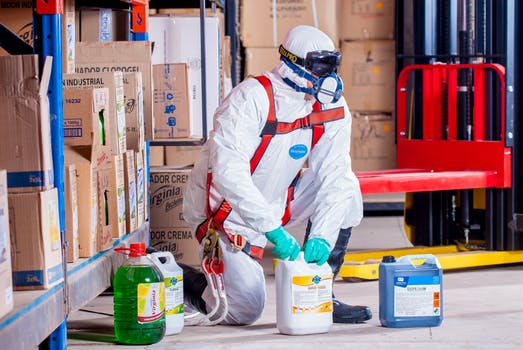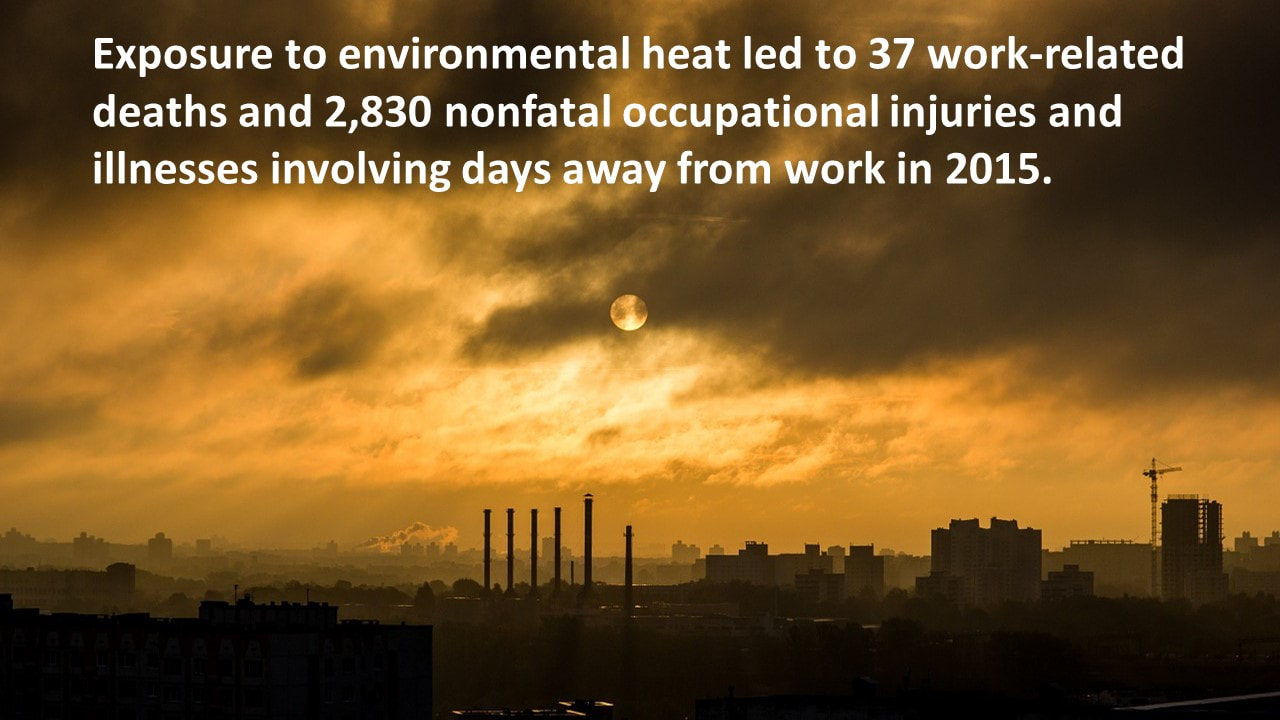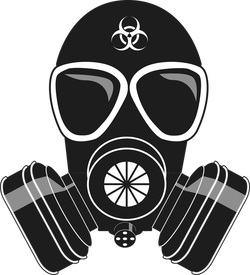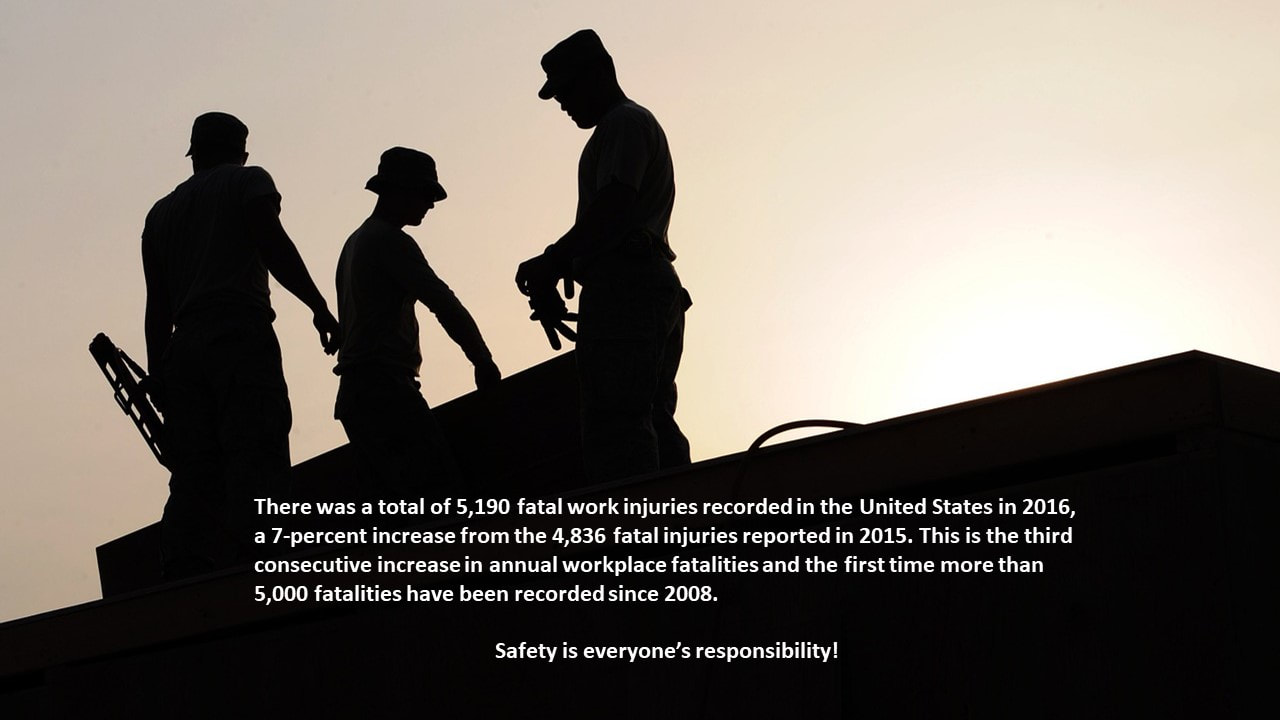|
Subpart: D – Occupational Health and Environmental Controls
OSHA Standard: 1926.59/1910.1200 Occurrence: Initially upon assignment. Frequency: As chemicals, conditions or roles change. Training Style: Hands on training, toolbox talk, classroom instruction. Background: The purpose of this section is to ensure that the hazards of all chemicals produced or imported are classified, and that information concerning the classified hazards is transmitted to employers and employees. This standard is to be consistent with the provisions of the United Nations Globally Harmonized System of Classification and Labelling of Chemicals (GHS), Revision 3. The transmittal of information is to be accomplished by means of comprehensive hazard communication programs, which are to include container labeling and other forms of warning, safety data sheets and employee training. Employer Responsibilities: Employers are required to provide employees with effective information and training on hazardous chemicals in their work area at the time of their initial assignment, and whenever a new chemical hazard the employees have not previously been trained about is introduced into their work area. Employees shall be informed of:
Employee training shall include at least:
Employee Responsibilities: Employees are expected to take an active role with the training and ask questions as they arise. They are also expected to ensure that they do not perform task that they have not been trained or is outside there scope of work. Contact STAC for assistance if you have any questions! [email protected]
0 Comments
A popular event in the early phases of Army Basic Combat Training is the gas chamber. This event is known as a “Confidence Training Event” as you learn the ability of the protective mask. The chemical used in the chamber is called orto-chlorobenzylidene-malononitrile, or simply CS or Tear gas. Yes, it is the same gas the police officers use for riot control. Tear gas is an irritant; specifically, it irritates mucous membranes in the eyes, nose, mouth and lungs, causing tearing, sneezing, coughing, and in some case vomiting. Although I will say, it does clear out the sinuses quite well.
Depending on the component (active, reserve, or national guard) this might be the only experience that soldiers get to perform “confidence training” with a Protective Mask; note, it is not called a gas mask, because it protects the individual from more than just gases. I say this as a Chemical, Biological, Radiological, and Nuclear (74D) Sergeant – basically I’m in charge of the maintenance of the Protective Masks for my unit. Anyways, back to basic training. Initial entry soldiers look forward to the gas chamber for a number of different reasons: 1) Checking off one of the major training events, 2) Rite of passage 3) Experience of tear gas Plus, it’s not like you can say “no” and skip the event. On the morning of the gas chamber we marched through the woods and less than a mile from our barracks to a black painted cinder block building with no windows. We were given instruction on the correct wear and use of the mask than onto waiting to get a turn in the gas chamber. I was one of the last groups to go into the gas chamber, so I had to sit and watch everyone else suffer as they burst out of the building from inhaling the tear gas. I lined up with a group of 20 recruits and went inside the gas chamber. Once inside I could barely see, the room was thick with the CS gas. But, something that did instill confidence in my mask, I did not experience any respiratory irritations. The only discomfort I experienced was the gas was irritating my sun burn on my neck. Next, we cycled through many different exercises to get our heart and breathing rate up. The inevitable was next, the Drill Sergeant tapped my shoulder to give me the signal to remove my mask and take a deep breath and recite the Soldier’s creed. I got through one line and my lungs started to burn and it became difficult to breathe. After reciting the second line the Drill Sergeant let me leave. I rushed out and started flapping my arms, the international symbol for I might be exposed to a hazardous chemical. My eyes were watering, my nose was running, my lungs felt like they were on fire and I couldn’t stop coughing, but at least I didn’t throw up. While most training doesn’t have to be this extreme, the experience would have been completely different if we just wore our protective mask without experiencing the CS gas. Hands on-training and confidence testing of gear/equipment plays an essential role in being able to trust the gear. It is important to incorporate as much hands-on training into safety classes to ensure individuals retain the information and that they can obtain confidence in their gear. Subpart: D – Occupational Health and Environmental Controls
OSHA Standard: 1926.57 Occurrence: Initially upon assignment. Frequency: As equipment, conditions, or roles change. Training Style: Hands on training, toolbox talk, classroom instruction. Background: This standard relates to sand-blasting, spray booths, and open surface tanks. Whenever hazardous substances such as dusts, fumes, mists, vapors, or gases exist or are produced in the course of construction work, their concentrations shall not exceed the limits specified in 1926.55(a). When ventilation is used as an engineering control method, the system shall be installed and operated according to the standard. The local exhaust ventilation shall be designed to prevent dispersion into the air of dusts, fumes, mists, vapors, and gases in concentrations causing harmful exposure. Such exhaust systems shall be so designed that dusts, fumes, mists, vapors, or gases are not drawn through the work area of employees. The exhaust system shall be in operation continually during all operations which it is designed to serve. If the employee remains in the contaminated zone, the system shall continue to operate after the cessation of said operations, the length of time to depend upon the individual circumstances and effectiveness of the general ventilation system. When dust leaks are noted, repairs shall be made as soon as possible. Employers must use only respirators approved by NIOSH under 42 CFR part 84 for protecting employees from dusts produced during abrasive-blasting operations. Additional requirements are included for open surface tanks. All employees working in and around open-surface tank operations must be instructed as to the hazards of their respective jobs, and in the personal protection and first aid procedures applicable to these hazards. If, in emergencies, such as rescue work, it is necessary to enter a tank which may contain a hazardous atmosphere, suitable respirators, such as self-contained breathing apparatus; hose mask with blower, if there is a possibility of oxygen deficiency; or a gas mask, shall be used. If a contaminant in the tank can cause dermatitis, or be absorbed through the skin, the employee entering the tank shall also wear protective clothing. At least one trained standby employee, with suitable respirator, shall be present in the nearest uncontaminated area. The standby employee must be able to communicate with the employee in the tank and be able to haul him out of the tank with a lifeline if necessary. Contact STAC for assistance if you have any questions! [email protected] http://www.constructionexec.com/article/training-requirements-in-construction Training has become a strong focus recently in the construction industry to reduce accidents and injuries. Studies have proven that training not only provides a more competent workforce, but also a safer work environment. Another motivating factor is fines from the result of OSHA citations. In the 2017 top 10 list, 4,174 of the citations were training related. If those were all compiled into one standard, it would have been the 3rd most frequently cited standard in 2017. But, when is training required? When is refresher training required? What documentation is needed? What resources are available? When is Training Most people are familiar with, and already have training programs for, aerial lifts, rigging & signaling, and powered industrial trucks. But, just to name a few others, hand & power tools, stairways and ladders, occupational noise exposure, fire protection, and employee emergency action plans also require a written training program. What about earth moving equipment, golf carts, and other equipment with no direct OSHA standard? 1926.20(b)(4) states that “the employer shall permit only those employees qualified by training or experience to operate equipment and machinery.” This proof of competency is accomplished through the creation of a written training program. The focus of this program is the recognition and avoidance of hazards and unsafe conditions related to the task. Elements needed in the program include the type of instruction, practical training, and evaluation methods used. Each employee that could be assigned that task or exposed to that hazard must be trained, if not that could be considered a separate violation. It is the responsibility of the employer to document and prove competency. Depending on the type of training, toolbox talks can also be used. When is Refresher Training Required Refresher training can be broken down into three categories: OSHA driven, accident/injury driven, and company driven. The following OSHA standards require annual training refreshers: bloodborne pathogens, confined space rescue team, hazardous waste operations and emergency response (HAZWOPER), occupational noise exposure, and respiratory protection. Toxic and hazardous chemicals all require at least initial training; the following hazardous chemicals require annual training: acrylonitrile, asbestos, benzene, butadiene, cadmium, carcinogens, coke oven emissions, ethylene oxide, formaldehyde, inorganic arsenic, lead, methylenedianiline, & vinyl chloride. First Aid/CPR requires refresher training every 2 years. Process safety management and powered industrial trucks require refresher training every 3 years. Aerial lift refresher should occur every 4 years. Refresher training can also be required in the event of an accident, injury, or near miss. This category includes: when an operator of a vehicle or equipment is observed using it in an unsafe manner, the operator has received an evaluation that reveals the operator is not operating safely, the operator is assigned a different vehicle or equipment, or as workplace conditions change that affect safe operation of the vehicle or equipment. Finally, the company has the ability to implement their own refresher training dates, as long as they minimally meet the OSHA standards. Training Documentation Required The documentation needed for training varies for each standard. But, at a minimum the following information is required. (1) Name and signature of the trainer; (2) Name of the employee (signature is not required); (3) Date of training; (4) Subject of training; (5) Proof of competency and date of evaluation. This proof of competency can be a written test, practical evaluation sheet, or a combination of both. Another critical piece of documentation is the availability of the records. The employer is required to make the training records available to employees and upon request to the Assistant Secretary and the Director for examination and copying. These training documents must be produced within 4 hours of being requested. The storage of records should be maintained for a minimum of 3 years after the date of training. Only the most current training records need to be stored. Failure to document employee safety training can lead to OSHA citations and fines in the event of an OSHA inspection or in an accident investigation. Resources Available Training resource information can also be broken into 4 categories: manufacturer, Insurance agencies, suppliers/dealers, and regulatory agencies. Manufacturers’ create manuals and other safety information that explains safe operating standards and training requirements for the equipment or machinery. OSHA relies on these manuals in the absence of written standards when writing citations. Insurance agencies can provide written training programs and even training in some cases. Equipment and tool dealers also can provide written programs and competent person training. Regulatory agencies, such as OSHA or ANSI, produces a multitude of great resources and publications. The best resources for OSHA training requirements is OSHA 2254 publication “Training Requirements in OSHA Standards.” This publication is the compilation of all OSHA standards in general industry, maritime, construction, agriculture, and federal employee programs that have training requirements. Reposted from constructionexec.com, May 18, 2018, a publication of Associated Builders and Contractors. Copyright 2018. All rights reserved. http://www.constructionexec.com/article/training-requirements-in-construction |
AuthorSTAC Admin Categories
All
Archives
July 2024
|







 RSS Feed
RSS Feed